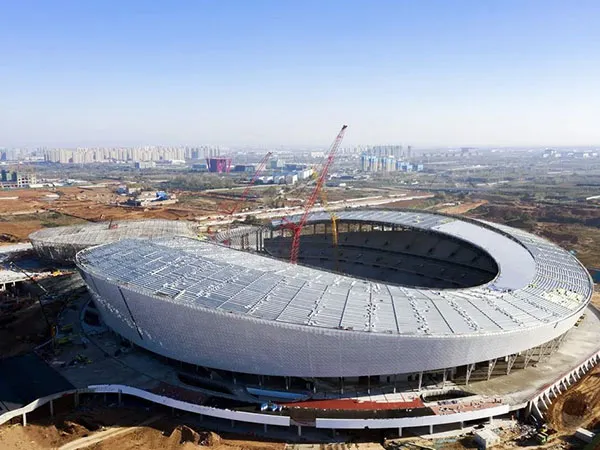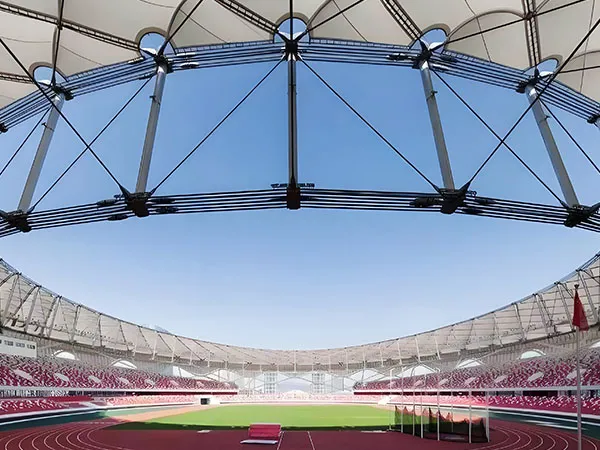Reparación de grietas de soldadura en estructuras de acero Es una tarea crítica que requiere una planificación cuidadosa., ejecución, e inspección para garantizar que se restablezca la integridad estructural y que la grieta no regrese. Este es un trabajo para estructuras críticas y SIEMPRE debe ser realizado por soldadores calificados siguiendo procedimientos aprobados bajo la supervisión de ingenieros o inspectores experimentados..
Reparación de grietas en soldaduras de estructuras de acero

1. Evaluación y planificación:
Seguridad ante todo: Implementar todas las precauciones de seguridad necesarias.. Esto incluye el EPP adecuado. (máscara de soldadura, guantes, cueros, respirador si es necesario), vigilancia contra incendios, ventilación, permisos de trabajo en caliente, Procedimientos de bloqueo/etiquetado si está cerca de maquinaria., y asegurar el área.
Identificar la grieta: Localice la grieta con precisión. Determinar su extensión total (longitud, profundidad, y si se extiende a través del espesor). Pruebas no destructivas (NDT) métodos como la prueba de partículas magnéticas (MONTE), Pruebas de líquidos penetrantes (PT), o Pruebas Ultrasónicas (Utah) A menudo son esenciales para encontrar las puntas de las grietas con precisión..
Determinar la causa (Crucial!): Este es el paso MÁS importante para prevenir la recurrencia.. ¿Por qué se formó la grieta??
Fatiga: Carga cíclica que conduce al inicio y propagación de grietas..
Alto estrés residual: Del proceso original de soldadura o fabricación..
Fragilización por hidrógeno: Hidrógeno atrapado en la soldadura/zona afectada por el calor (ZAT). A menudo causa agrietamiento retardado. (horas o días después de soldar).
Mala calidad de soldadura: Falta de fusión, falta de penetración, porosidad, inclusiones de escoria que actúan como elevadores de tensión.
Procedimiento de soldadura incorrecto: Consumibles incorrectos, Temperatura de precalentamiento/interpaso incorrecta, parámetros incorrectos.
Mal diseño de las juntas: Crea concentraciones de estrés..
Sobrecarga: La estructura fue sometida a cargas superiores a su capacidad de diseño..
Defectos del metal base: Laminaciones o inclusiones en el propio acero..
Consultar Códigos y Normas: Consulte los códigos de soldadura relevantes. (p.ej., Código de soldadura estructural AWS D1.1: acero, Eurocódigo 3, etc.) y especificaciones del proyecto para requisitos relacionados con la reparación de grietas..
Desarrollar un procedimiento de reparación: Basado en la causa, tipo de material, espesor, ubicación, y requisitos del código, una especificación detallada del procedimiento de soldadura (WPS) para la reparación debe ser desarrollado o seleccionado. Esto especifica:
Método de eliminación de grietas..
Detalles de preparación conjunta.
Proceso de soldadura (Marea, FCAW, Gawn, SIERRA).
Tipo y tamaño del metal de aportación..
Requisitos de precalentamiento.
Control de temperatura entre pasadas.
Tratamiento térmico posterior a la soldadura (Pwht) si es requerido.
Requisitos de END antes, durante, y después de la reparación.
Personal Calificado: Asegúrese de que los soldadores que realizan la reparación estén calificados de acuerdo con el WPS específico y los códigos relevantes.. Garantizar la participación de inspectores y técnicos de END calificados.
2. Ejecución de reparación:

Eliminación de grietas: toda la grieta, incluyendo sus consejos, debe ser eliminado completamente. Esto normalmente se hace por:
ranurado: Ranurado por arco de carbón y aire (POOH) Es común y eficiente, pero requiere cuidado de no introducir exceso de carbono en el metal base. (generalmente seguido de molienda). Ranurado por arco de plasma (PÁGINA) es otra opcion.
Molienda: Usando ruedas abrasivas. Más controlado pero más lento, adecuado para grietas más pequeñas o acabado después del ranurado.
…
Para obtener información más detallada sobre cómo reparar grietas de soldadura en estructuras de acero., por favor haga clic aquí: https://www.meichensteel.com/a/news/repairing-cracks-in-steel-structure-welds.html

